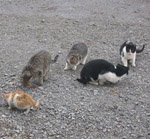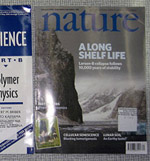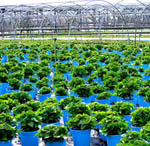Forests homogenizing as they become more species rich
 Biodiversity,
Biodiversity,  Forest
Forest Temperate forests in Europe are homogenizing even though conventional measures of plant community health might suggest otherwise.
Researchers Tobias Naaf and Monika Wulf looked at changes in the species make-up of the herbaceous layer of ancient broadleaf forests communities in plots distributed across northwest Germany. They compared the results to those from sampling done on the same plots 20 years earlier, and published their findings in the journal Biological Conservation.
They found that mean species richness (i.e. the average number of species found in a community) has increased over the past twenty years. However, they also found that the species composition among forest communities has become more similar.
These seemingly contradictory findings highlight the difference between species richness - otherwise known as alpha diversity - and the compositional dissimilarity between communities - otherwise known as beta diversity.
Interestingly the researchers found that beta diversity has decreased largely because native generalist species - specifically, those adapted to a broad range of soil pH and moisture conditions - have invaded forest communities. Since native specialist species have, for the most part, not dropped out, the invasion of native generalists has led to an increase in overall species richness.
This begs the question of whether forest homogenization is a bad thing in this case. On the surface, the concurrent increase in species richness seems like it could be a positive outcome.
However, since this study just represents a snapshot in time, the longer-term trend may lead to the habitat generalists displacing the specialists resulting ultimately in species impoverishment. This seems to be the case in a similar study in Wisconsin that looked at changes to forest community composition over a 50-year period and found decreases in both beta and alpha diversity.
In terms of the new research by Naaf and Wulf, the findings illustrate that forest communities can be undergoing homogenization on a regional scale even though commonly used measures of biological integrity are giving few warning signs.
--Reviewed by Rob Goldstein
Naaf, T., & Wulf, M. (2010). Habitat specialists and generalists drive homogenization and differentiation of temperate forest plant communities at the regional scale Biological Conservation DOI: 10.1016/j.biocon.2009.12.027




Reader Comments